Introduction: Easy Paper Mache Mask
Using paper mache to create custom masks is an age old tradition, and there are a lot of ways to do it. In this Instructable I'll show you how to use wire mesh and paper strips to create a base that is perfectly fitted to your face. This is a really simple technique that produces some pretty great results.
I'll also show you how I added details to my mask by sculpting over that base with paper mache clay. Paper mache clay is a cheap and awesome air-dry sculpting material that you can either make, or buy pre-made. To learn more about the different kinds and how to make it, check out my free Paper Mache Class.
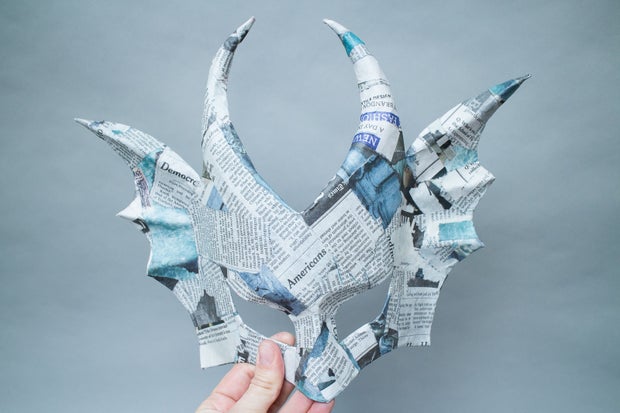

Step 1: Tools and Materials
- Newspaper, newsprint or blue shop towels
- All purpose white flour
- GlueAll, or wood glue
- Masking tape
- Strong twine, ribbon or elastic
- Wire sculpting mesh
- Scissors
- Mixing bowls
- Measuring cups and spoons
- Airtight container or ziplock bag
- Paint brushes
- Cloth tape measure
- Pencil and paper
- Sharpie
- Drop cloth or other plastic cover
- Ruler
- Hand mixer (optional)
- Store bought CelluClay or Creative Paperclay or make your own clay
- Sculpting tools (optional)
- Acrylic paint
- Gesso or Flexbond primer
- Sand paper
- Cordless drill (optional)
- Acrylic medium, or other sealant
- 2-3 days working + drying time
Step 2: Using Mesh to Create a Mask Armature
To create the base of our mask we are going to use sculpting mesh to form the shape which will be covered with paper mache strips. This kind of wire mesh is sold at art supply stores in various densities. It is very formable an stretchable, and used to create the bases of a lot of sculptural projects. I bought the mesh with the smallest holes because the texture is the easiest to cover up, but any will really work in this situation.

To start creating your mask, first take some basic measurements of your own face or whoever you are making a mask for with your cloth measuring tape.
Measure top of forehead to chin, then measure down to the eyes and draw a perpendicular line. Mark the bottom of the nose, and the distance between the eyes, then the distance from ear to ear.

Around this T draw the shape of your mask, thinking about where the shape will sit in relation to the parts of your face. This will be the base, so you don't need to add details, just create the basic shape.

Cut it out of the paper and hold it up to your face to see if you like how it looks. Remember that it will bend and fit more snugly to your face when you make it in the wire, but you can get an idea of how it will look this way.
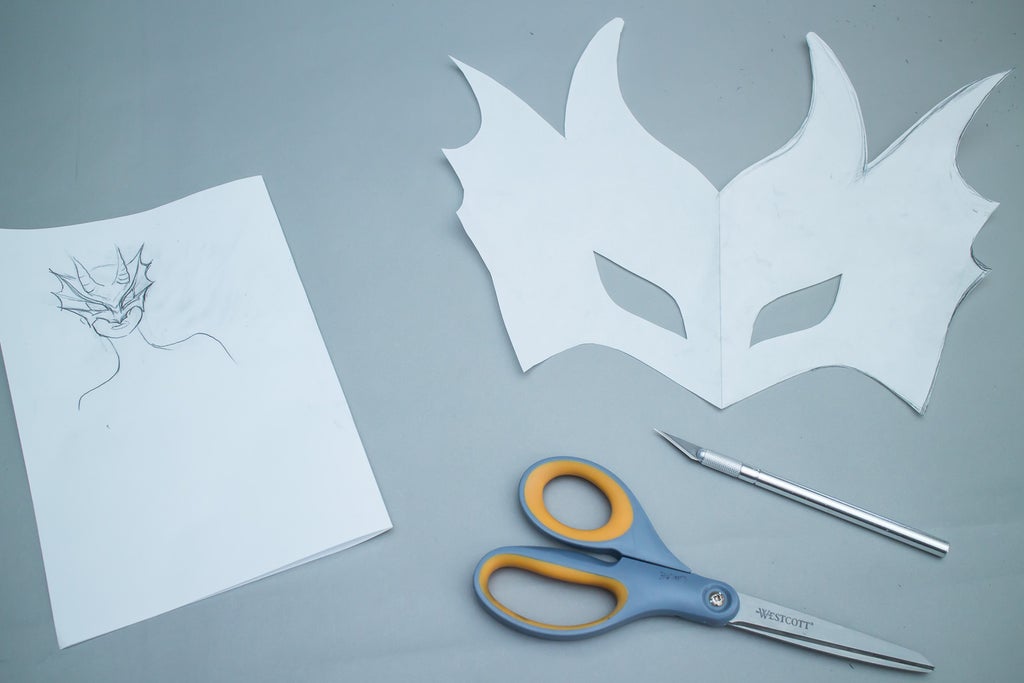
When you have a shape that you like, lay it on top of your mesh so it is parallel to the grain of the mesh, and use a sharpie to trace around the outline.


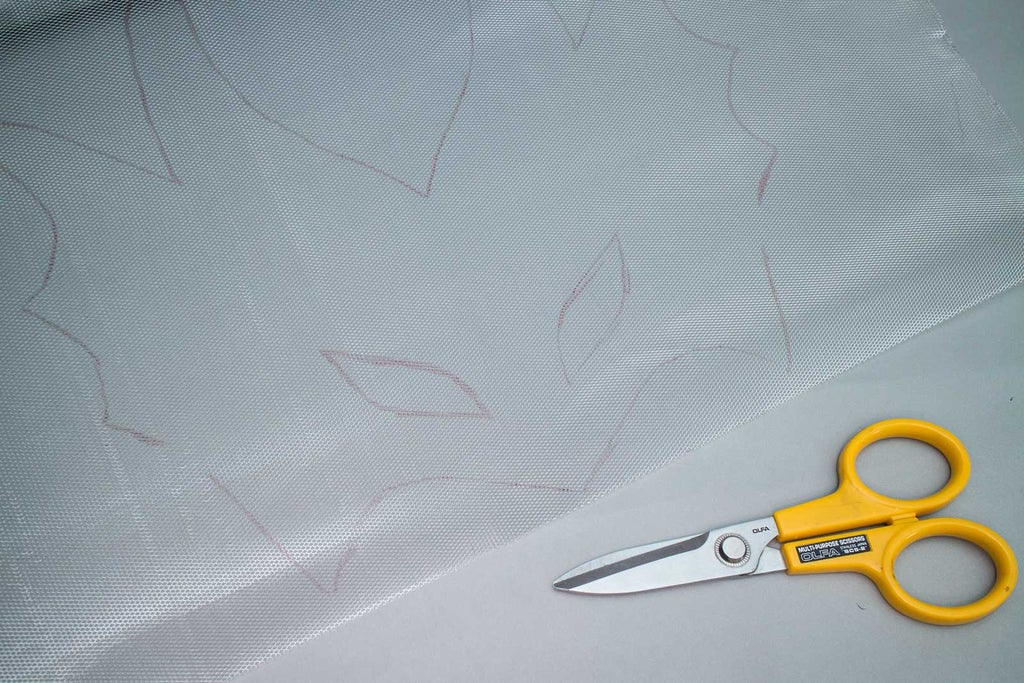
Cut the shape out with a pair of craft or serrated scissors. Don't cut out the eye holes just yet. The edges of the mesh can be poky, so be careful not to stab yourself as you are cutting.


Use your hands to carefully begin to shape the mask. I added curves to the edges of the horns and raised ridges to the side fins.

To shape the mask to your face, hold the mesh in front of your face with your index fingers right over the eyes. Press the mesh onto your face, making indentations where your eyes are, moulding over the ridge of your nose, and curving around your forehead and cheeks.

Take the mask off, smooth out any bumps, and adjust the shape so it is the same on both sides. Keep taking the mask on and off and fiddling with it until you have a shape you like. Then use your scissors to cut out the eyes. Before you try the mask on again, make sure you bend the edges of the mesh out slightly around the eyes so it doesn't poke you.

Step 3: Adding Paper Strips
Once you have your mask armature formed, cover it with paper strips. You can use either glue or flour paste here, whichever you prefer.
Start by covering the front of the mask with strips. Curve the strips to contour around the shape of the mask and tear them off so they end right before the edge.

Cover the whole front of the mask with two layers of strips, and let it dry enough so the strips are sticking to the front and holding their shape.

Then flip the mask over and add two layers of strips to the back in the same way.
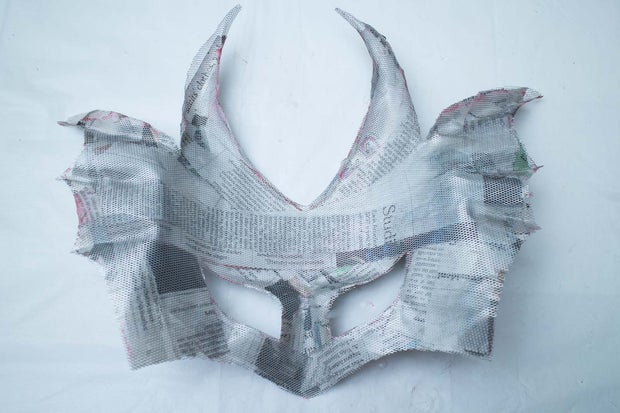

Once this layer has mostly dried, you can start taking short strips and wrapping them around the exposed edges of the wire. They should stick to the dried paper on both sides. Use narrow strips on curved areas to create a smooth edge.
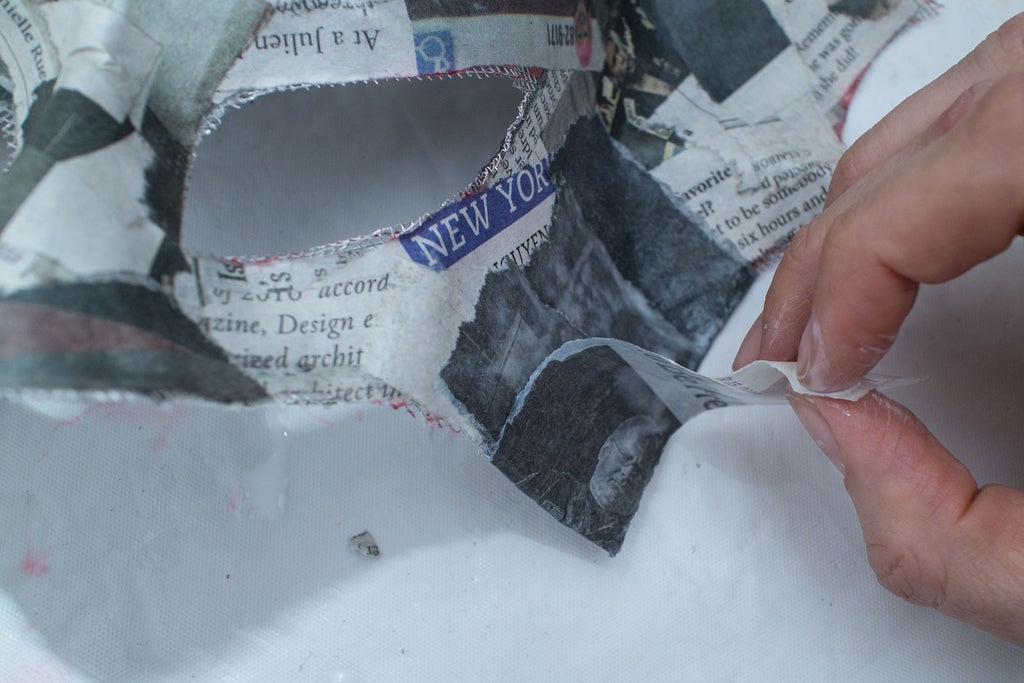
To cover points and corners, fold a strip over on itself like this:
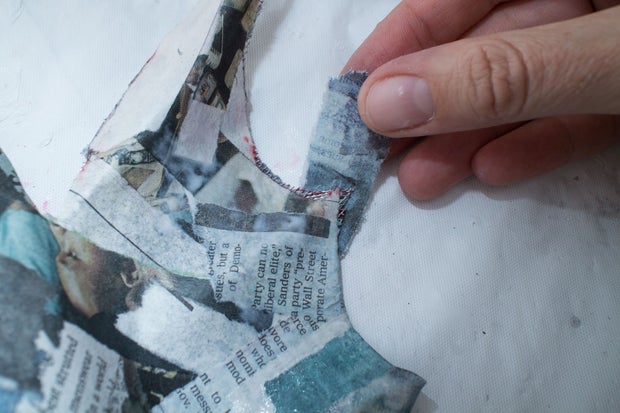



Step 4: Using Paper Mache Clay to Add Details
Once your mask base has dried thoroughly, you can use paper mache clay to add some details to it if you like. Because the clay can be sculpted and formed to create any shape, it is a much more accurate way to add small details on top of an a paper mache base than trying to use the strips themselves.
You can use either the homemade clay or one of the store-bought paper clays for this. I tried the home made clay on one mask and the Creative Paperclay on another so you can see the difference. Check out my free Paper Mache Class to for more info about paper mache clay.
Either way, all you need to do is take pieces of the clay and stick it onto the dry paper mask. Smooth the edges of the clay into the paper to blend it and give it a good grip. If the clay seems dry and isn't sticking well, rub a little water on the surface of the clay that you are attaching to the mask.

To help smooth the clay you can also wet the surface slightly and rub it with your fingers. You can also use sculpting tools or stamps to create texture or details.

On these masks I used the clay to add some facial details to the mask I was creating to make it look a bit more dragon-ish. You can see the details I created with the home-made clay in the first photo and the Paperclay in the second. As you can see, it's a little harder to get smooth details with the homemade clay.


You could add as many details as you want, and even cover the whole mask with clay. But keep in mind that the more clay you add, the heavier the mask will be. Covering the whole mask with a thin layer of clay will let you create a really smooth surface when combined with sanding though.
Step 5: Sanding
If you've used the store bought Paperclay, you can easily sand it to smooth and shape it once it has fully dried.
I used 100 grit sandpaper for a first pass to shape the clay, and 120 for a second smoothing pass. if your project has areas where the clay meets paper strips, sand these edges so they blend in smoothly.

The clay in the first photo is un-sanded and the clay in the second is sanded.
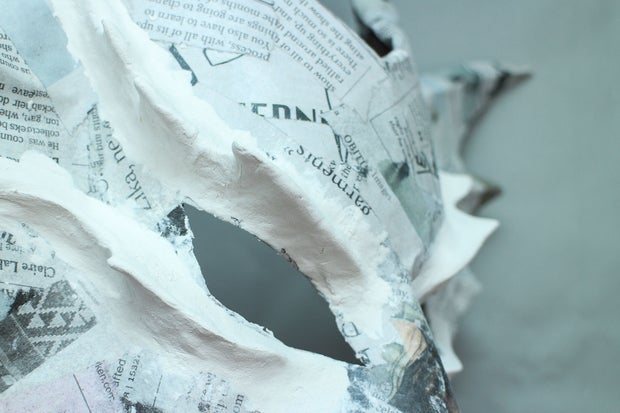

Use a large brush or a towel to brush off the paper dust when you are done.
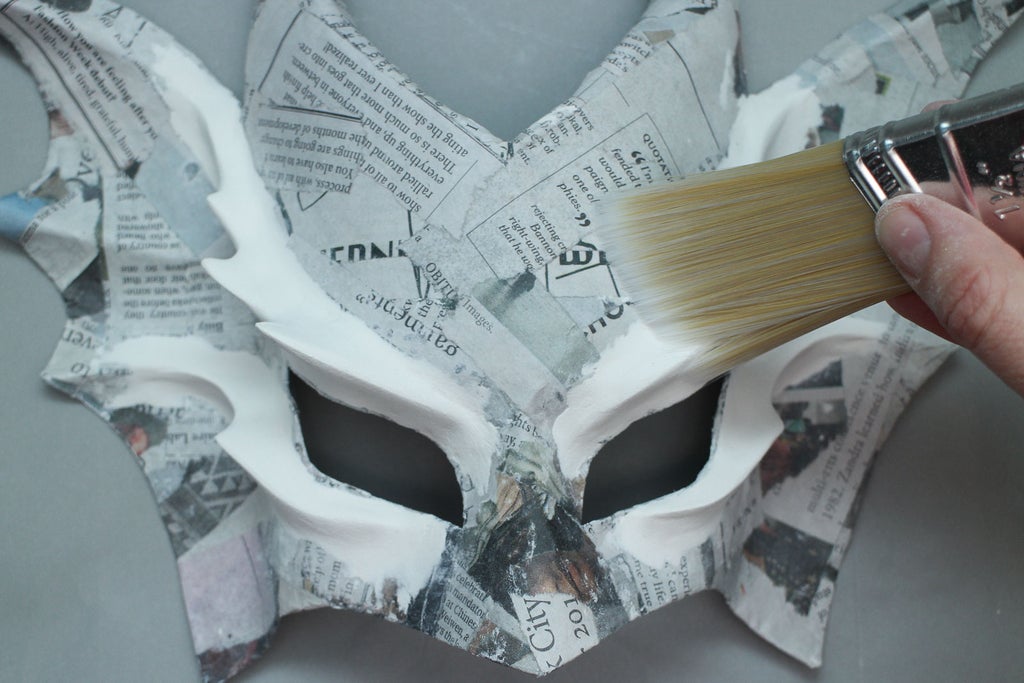
The homemade clay is harder and more fibrous than the store-bought clay, so it doesn't sand as well. If you are using this clay and having a hard time sanding, try using a sandable smoothing compound first then sanding over it.
Step 6: Using Smoothing Compounds and Primers
Smoothing compounds like gesso and Flexbond are helpful to create a smooth finish on paper mache strips or clay before you paint. Flexbond is a lot like wood glue, but creates a smoother finish and can be wet-sanded after it is dry if you want an even smoother finish. Gesso sands even more easily, so it is the best choice of smoothing compound if you are working over a base that can't be sanded and want to create a really smooth finish.
I used Flexbond on both my un-sanded home made clay and my sanded Paperclay so you can see what a difference the sanding makes when I paint it later.
Put a little Flexbond in a cup and dilute it with some water. Use a medium sized brush to apply it all over the mask in a even layer. It can have a tendency to run and create drips, so use your brush clean up any dripping areas before you leave it to dry.

Once the first layer has dried, which shouldn't take more than an hour or two, add a second coat. You can continue adding layers until your mask is as smooth as you want it to be. If you plan on wet-sanding your Flexbond, you should add at least 4 coats.
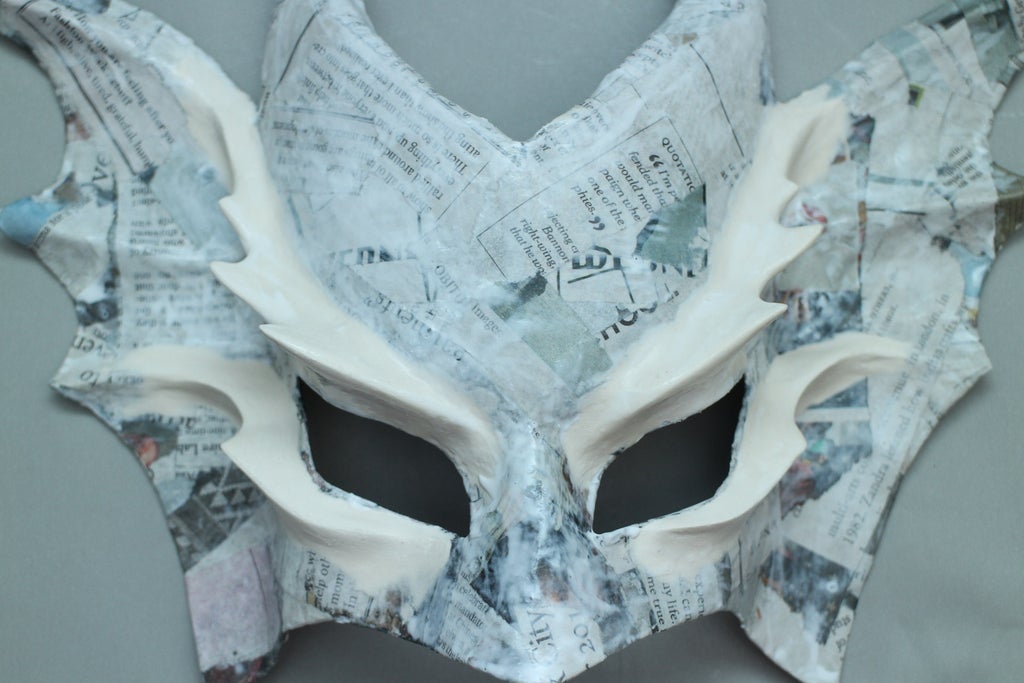
Step 7: Painting
Once you have sanded and primed you can paint your mask with whatever colors and patterns you like! If you are making a mask that is supposed to represent some specific creature or style, you might want to look up some reference images to help inspire you.
I think acrylic paints are the best for this type of painting. They dry fast, can be mixed easily and are relatively inexpensive. I particularly like using metallic colors or a combination of metallic pigment powder mixed with acrylic medium.

Mix your paints to get a color you like, then apply enough coats to your mask to cover the details of the newspaper and clay. If you are using a light or bright color, you might want to prime your mask with a white paint or primer first.


To create blended or shaded effects, mix a lighter color and apply it over the base coat, using the base color to blend the two at the edges. It can really enhance the look of a piece to add shading in concave areas and highlights in raised areas.

Use different brushes to create finer details.
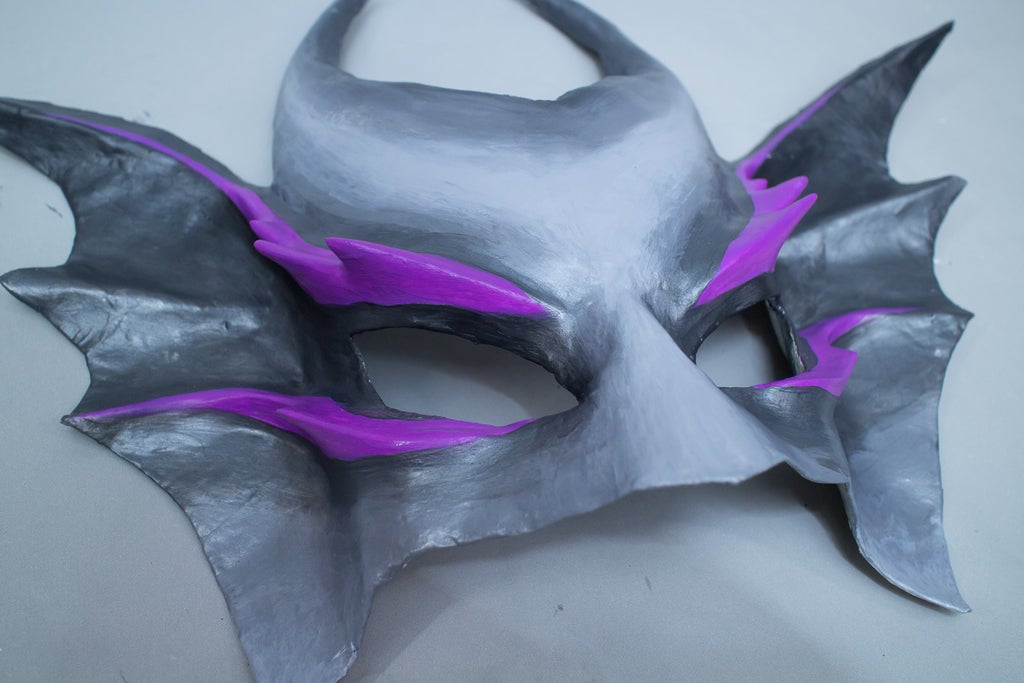
Step 8: Sealing
Once you've painted your mask, you can give it some extra protection or a different finish by covering it up with some kind of sealant like an acrylic medium, shellack, or something similar. This is an optional step, but a good one if you think your mask is going to get a lot of wear or be outside often.
Step 9: Disguise Yourself!
Now that you've finished your awesome mask, add some string or elastic so you can wear it, or hang it on a wall for display. Since I didn't make holes in the mask earlier, I drilled two holes on each side with a cordless drill, keeping the holes about 1/2" apart. Then I threaded some sturdy string through the holes and threaded it behind my head, and became a new creature!!
This wire mesh and paper mache combination is a good technique you could use to create a lot things. If you've made a version of this project, feel free to post and I Made It in the comments section below!
And, to learn more about paper mache, check out my free Paper Mache Class.





